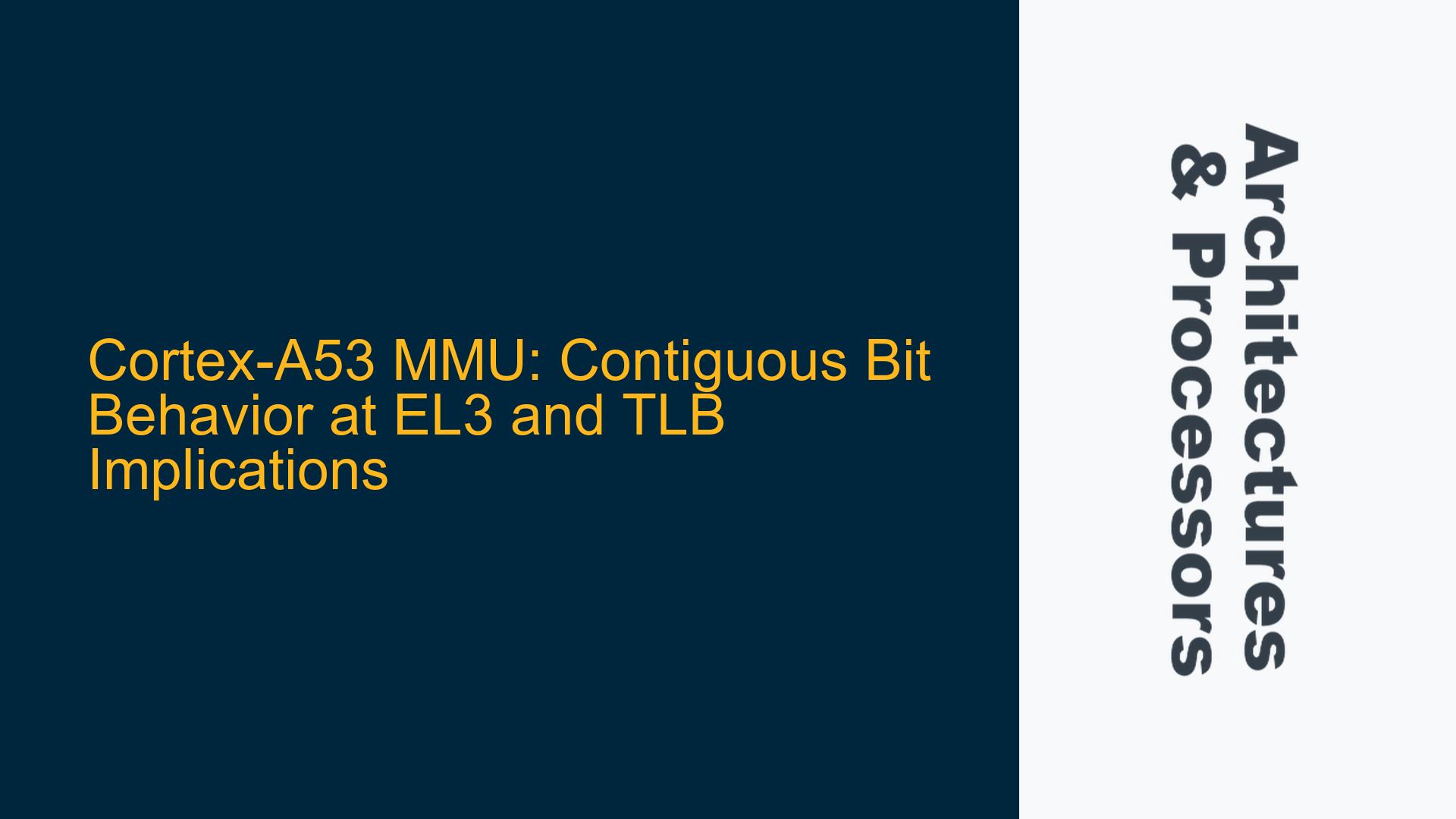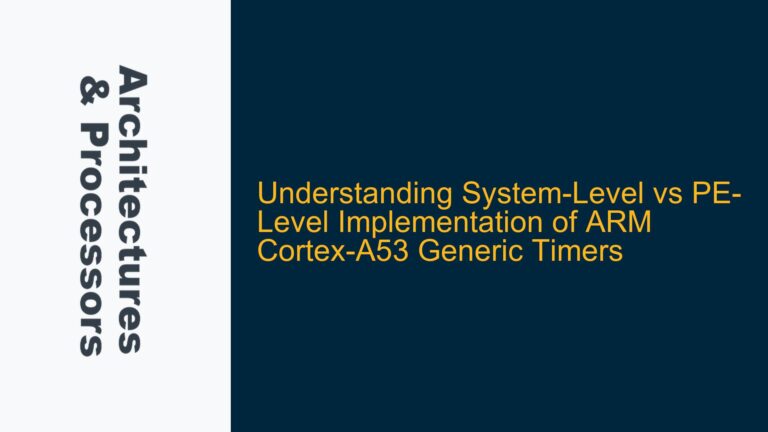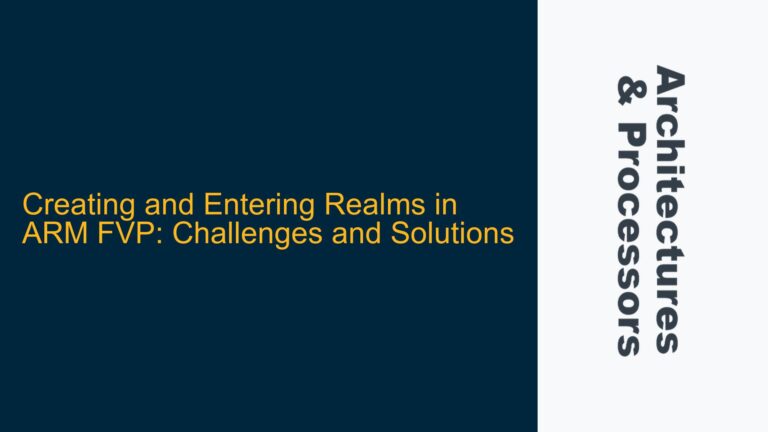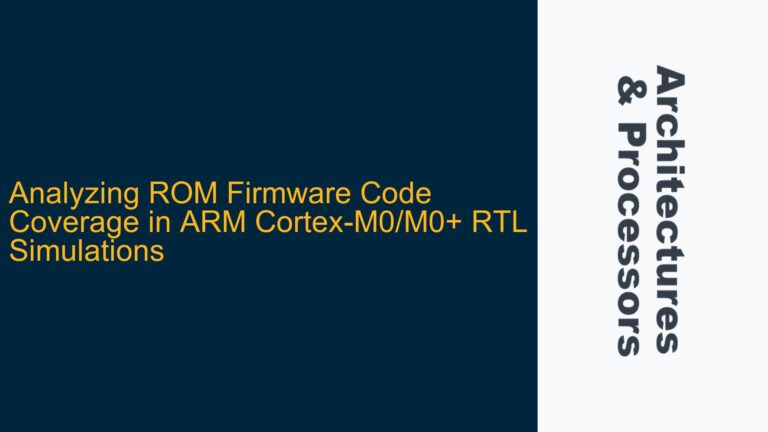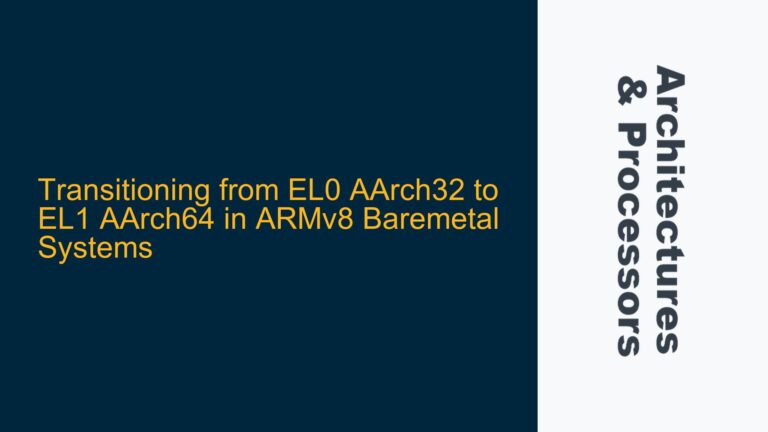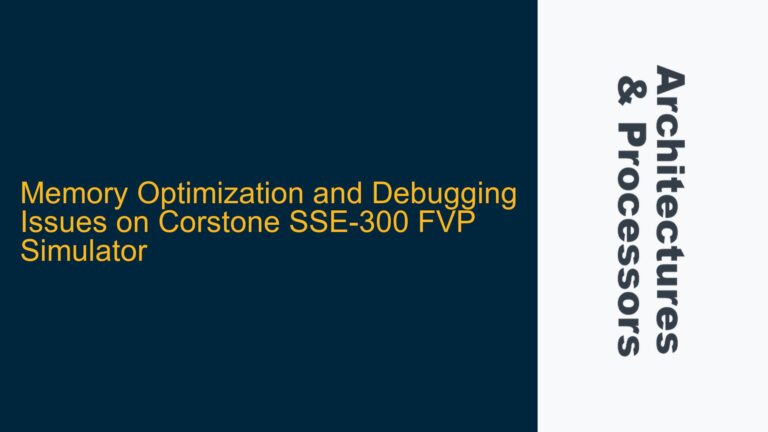Cortex-A53 MMU Contiguous Bit Functionality at EL3
The Cortex-A53 Memory Management Unit (MMU) is a critical component in the ARMv8-A architecture, responsible for translating virtual addresses to physical addresses. One of the key features of the MMU is the contiguous bit in the block/page descriptor, which is used to optimize translation lookaside buffer (TLB) entries by combining contiguous memory regions into a single entry. This optimization reduces TLB pressure and improves performance by minimizing the number of TLB entries required for large contiguous memory mappings.
At Exception Level 3 (EL3), which is the highest privilege level in ARMv8-A and typically used for secure monitor code, the MMU operates in a single-stage translation regime. This means that virtual addresses are directly translated to physical addresses without an intermediate physical address (IPA) stage, which is used in two-stage translation regimes (e.g., virtualization with EL2). The absence of an IPA stage at EL3 raises questions about the behavior of the contiguous bit, particularly whether it is utilized in the same way as in other exception levels.
The contiguous bit is explicitly mentioned in the context of the IPA cache RAM, which is used in two-stage translation regimes to cache intermediate physical addresses. However, since EL3 uses a single-stage translation, the IPA cache RAM is not relevant. This leads to the question of whether the contiguous bit is still effective at EL3 and whether the TLB can combine contiguous regions into a single entry for EL3 translations.
Memory Translation and TLB Entry Splitting in Cortex-A53
The Cortex-A53 MMU supports multiple translation table formats, including block and page descriptors. Block descriptors are used for large memory regions (e.g., 1 GB, 2 MB), while page descriptors are used for smaller regions (e.g., 4 KB). The contiguous bit in the descriptor indicates that a sequence of consecutive descriptors maps a contiguous memory region. When the contiguous bit is set, the MMU can combine these descriptors into a single TLB entry, reducing the number of TLB entries required and improving performance.
However, the Cortex-A53 TLB has specific behavior that complicates this optimization. For example, the TLB splits 1 GB block entries into two 512 MB entries, which suggests that the TLB has limitations on the size of entries it can handle. This behavior raises questions about whether the contiguous bit is effective for smaller block sizes and page entries at EL3.
The Main TLB RAM, which stores the final physical address translations, does not explicitly mention the contiguous bit. This omission suggests that the contiguous bit may not be directly used in the Main TLB RAM for EL3 translations. Instead, the contiguous bit might only be relevant in the context of the IPA cache RAM, which is not used at EL3. This leads to the conclusion that the contiguous bit may not provide the same optimization benefits at EL3 as it does at other exception levels.
Investigating Contiguous Bit Behavior and TLB Optimization at EL3
To determine whether the contiguous bit is utilized at EL3, it is necessary to examine the Cortex-A53 MMU architecture and the behavior of the TLB in single-stage translation regimes. The Cortex-A53 Technical Reference Manual (TRM) provides detailed information about the MMU and TLB, but it does not explicitly state whether the contiguous bit is used at EL3.
One approach to investigating this behavior is to analyze the TLB entries generated by the MMU for EL3 translations. By setting the contiguous bit in the block/page descriptors and observing the resulting TLB entries, it is possible to determine whether the MMU combines contiguous regions into a single TLB entry. This analysis can be performed using a debugger or performance monitoring tools to inspect the TLB contents.
Another approach is to examine the MMU hardware logic to determine whether the contiguous bit is processed at EL3. The MMU hardware logic is responsible for generating TLB entries based on the translation table descriptors. If the contiguous bit is not processed at EL3, then it will not be used to optimize TLB entries. This analysis requires access to the Cortex-A53 hardware design documentation, which may not be publicly available.
Based on the available information, it is likely that the contiguous bit is not utilized at EL3 for TLB optimization. The absence of the contiguous bit in the Main TLB RAM and the lack of explicit documentation supporting its use at EL3 suggest that the MMU does not combine contiguous regions into a single TLB entry at this exception level. This conclusion has implications for system performance and TLB management at EL3, as the lack of contiguous bit optimization may result in increased TLB pressure and reduced performance for large contiguous memory mappings.
Implementing TLB Optimization Strategies for EL3
Given the likely absence of contiguous bit optimization at EL3, it is important to implement alternative strategies to manage TLB pressure and optimize memory translations. One approach is to use larger block sizes for memory mappings at EL3, reducing the number of TLB entries required. For example, using 2 MB block descriptors instead of 4 KB page descriptors can significantly reduce TLB pressure.
Another approach is to manually manage TLB entries by invalidating and reloading TLB entries as needed. This can be done using the TLBI (TLB Invalidate) instructions to invalidate specific TLB entries or the entire TLB. By carefully managing TLB entries, it is possible to minimize TLB pressure and improve performance.
Additionally, it is important to consider the impact of TLB entry splitting on performance. The Cortex-A53 TLB splits 1 GB block entries into two 512 MB entries, which can increase TLB pressure for large memory mappings. To mitigate this, it may be necessary to use smaller block sizes or implement custom TLB management strategies.
In conclusion, the contiguous bit in the Cortex-A53 MMU block/page descriptor is likely not utilized at EL3 for TLB optimization. This has implications for system performance and TLB management, requiring alternative strategies to manage TLB pressure and optimize memory translations. By using larger block sizes, manually managing TLB entries, and considering the impact of TLB entry splitting, it is possible to mitigate the lack of contiguous bit optimization at EL3 and ensure efficient memory translations in secure monitor code.
